What should you keep in mind when you and your cat have to move to a different home? How can you prepare for the move in a cat-friendly way? And what’s the best way to get your feline friend accustomed to their new home?
Is it true what they say: New home, new happiness? Well, this isn’t always the case for cats, at least not at first. Especially when they suddenly find themselves in a home they don’t recognise. They ask: “Where’s my beloved scratching post?” and “Where’s that cosy corner I used to snooze in?” For cats, everything in the new home is different. And “their” human will likely be busy unpacking boxes and won’t have time to pay them any attention. Your cat will definitely not be a huge fan of this new situation!
Here are some tips on how you can make the move as pleasant as possible for your furry friend:
Plan your move in a cat-friendly way

When you move house with a cat, you should plan your move very carefully in advance. Why? For you, it’s just a new living space, but for your cat, it’s completely unknown territory and the very opposite of a familiar, safe living space. It might sound like an exaggeration, but it’s actually completely normal and quite justified for your furry friend to feel put off. As you probably already know, cats are creatures of habit and don’t like changes that affect their immediate environment. The whole thing will stress them out, because they’re programmed to be on their guard; they’re constantly checking their territory for potential hazards and scrutinizing everything with a critical eye. They’ll only be able to relax when they’ve had time to approve everything in their new home.
Preparing your new home for your cat

Everything should be prepared for your cat in their new home before they move in. Choose a room that will be reserved entirely for your cat for the first few days. In this room, you should place all their favourite things, and anything that has their smell on it. This might include food bowls, baskets, cuddly blankets, toys, scratching posts and their litter box. Make sure your cat has places they can retreat to if they want some peace and quiet. As we humans know, retreat is often the best defence! It allows us to see what’s coming and prepare for it in peace.
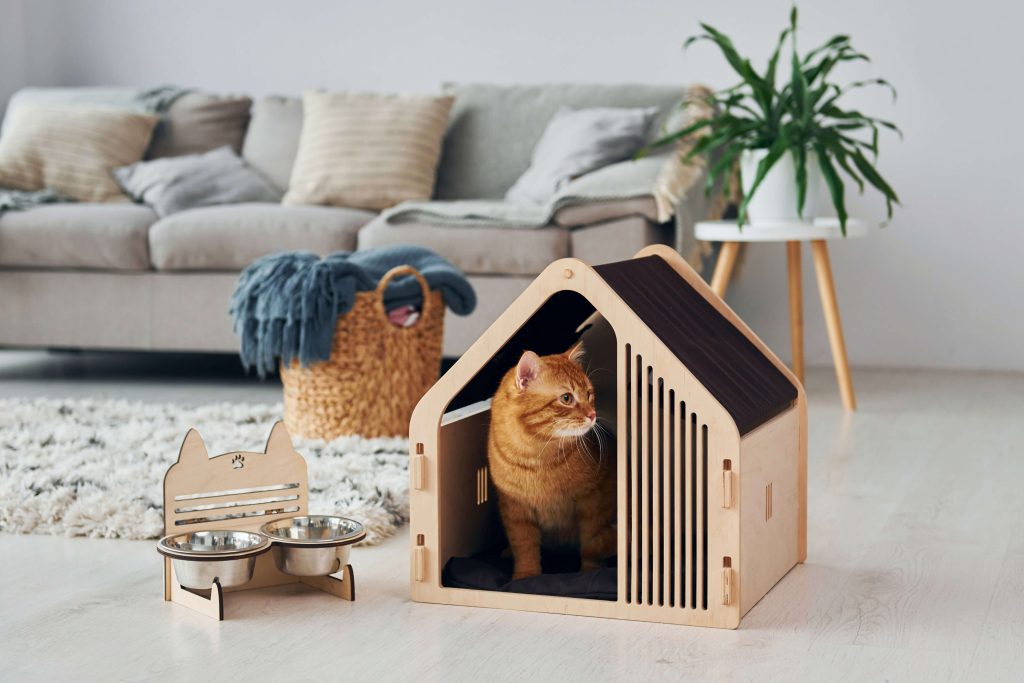
Checklist: Don’t forget to pack a moving box for your cat! So that your cat finds everything they need in their new home and quickly starts to feel comfortable there:
- Bowls with food and water
- Toys
- Basket with pillow
- Cat cave with blanket
- Cat litter box with cat litter
- Scratching posts and scratching boards
- Climbing furniture

Preparing your cat for the move

Prepare your cat in advance for the move. Cats are very sensitive and can sense that something is about to happen even before you start packing your first box! Make the move as stress-free as possible. You can either have your furry companion stay at a friend’s house during the entire moving process, or you can set up a kind of cat room where they can continue to live the way they’re used to right up until the day of the move. It would also be wonderful if someone could look after your cat during the entire move, but that person should be someone your cat already knows and enjoys being around.

TIP: Get your cat used to the transport carrier: Put your cat’s favourite blanket and favourite toys in the carrier, so your cat will experience less stress when it’s time to move!
Calming your cat down during the move

When you move house, there’s always a lot going on: strangers coming in and out and loud noises everywhere! These things are very challenging to cats because, as you know, they have heightened senses. They’re able to perceive even the smallest vibration, things that we humans wouldn’t even notice. In other words, cats are furry little seismographs. For this reason, pheromones can be helpful before, during and after the move; they will help calm your cat down and reduce stress levels. You can spray them on individual objects and use them in rooms via atomizers or vaporizers.

Please note:
During the move, use the nebulizer or vaporizer in the room where the cat spends most of its time and for at least four weeks in its new home.
Caring for your cat on moving day

On the day of the move, you should make sure your cat is well taken care of. Remember that you shouldn’t leave your cat alone on the day of the move! Figure out in advance who’s going to stay with your cat that day. There will be a lot going on and you’ll no doubt have your hands full. If your cat sitter isn’t a member of your close group of friends, and if your cat doesn’t know them yet, the two of them should get to know each other personally before the cat sitting. This will make moving house with a cat less stressful for both you and the cat.
Taking your cat on a long journey
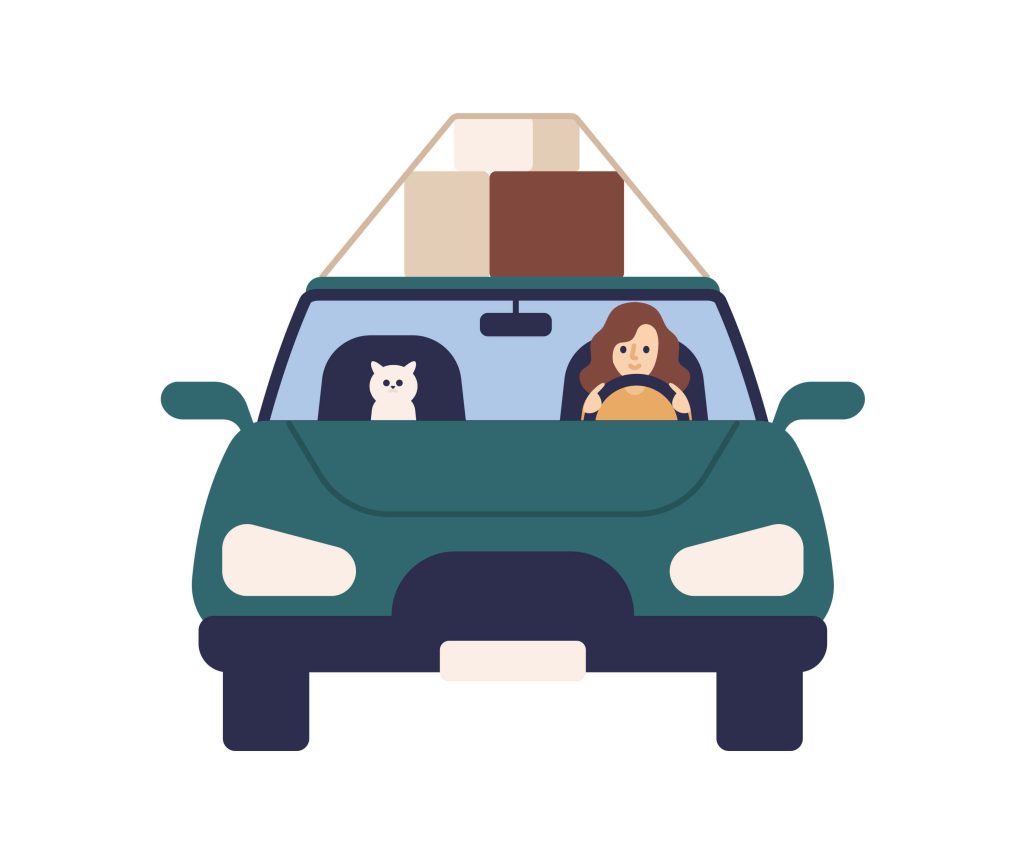
If you have to take your cat on a long journey, you should make sure your feline friend is accompanied by someone who’s able to create a calm and reassuring atmosphere. When travelling with your cat, you should always use a sturdy transport carrier. If possible, you should get one that can be opened from the front as well as from the top. Put a non-slip floor and a cuddly blanket in the carrier for their comfort. Always make sure they’re in a pleasant climate during the journey and remember that cats are sensitive to heat.
Moving house with an older cat

An older tree will find it harder to adjust to new soil than a younger tree, which can usually take root quite quickly. It’s the same with senior cats, especially ones who can no longer see or hear very well, who are no longer as agile as they used to be, and whose senses have deteriorated with age. Old cats rely on familiar things for orientation and seek out warmth and comfort to give them a feeling of security. For these reasons, moving house will be more stressful for older cats than for young cats, and senior cats will often take longer to settle in.
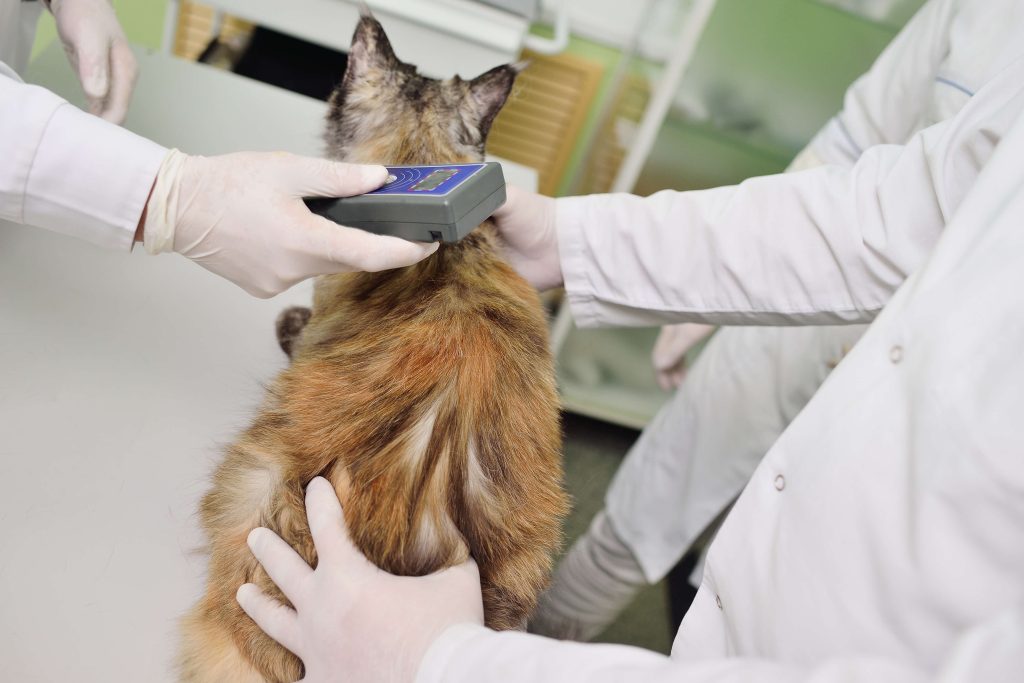
CAT CHIP:
Have your cat chipped before you move. You can think of a cat chip as a type of “feline ID card”. It shows who the cat belongs to and where it lives. This means that if your cat escapes during your house move or if it’s not able to find its way home the first time it goes out in its new neighbourhood, the person who finds your cat will be able to figure out where it belongs!
Getting your cat acclimatised after moving house

How can you get your cat acclimatised to its new home after your move house? Remember, you probably visited your new home several times before you actually moved in, whereas for your cat, it’s completely new territory. They’ll have to get used to everything first: all the new sounds and smells, and the entire new environment. After you move, start by setting up a place for your cat to retreat to in their new living area. It should be a place where they’ll find familiar items and be completely undisturbed. And remember to stick to all of your usual rituals: feeding times, play times and cuddling sessions. Even though you’ve got a lot on your plate, unpacking boxes and settling in, don’t forget that your feline friend is going to need a lot of warmth and attention right now!
Getting your indoor cat used to a new home
It’s a good idea to take a calm, step-by-step approach to settling into your new home. For example, don’t let your cat out of its transport carrier as soon as you arrive. Instead, take the carrier with your cat in it into the room you’ve prepared for them in advance. The windows and doors of the cat’s room should be closed. Open the door of the carrier, but leave it up to your cat to decide if and when it wants to leave the carrier to explore the room. Once the team of movers has gone and the noise level has dropped, you’re welcome to let your furry friend inspect the other rooms in peace and entirely at their own pace.
Getting an outdoor cat used to a new home

If your cat was used to going outdoors in your old home, and you want to do the same thing in your new home, the first thing you should do after you move is acclimatise your cat to the interior of your new home. Do this before you let your cat go outside and explore their new territory. Why? Because an outdoor cat is going to have to find their way back to their new home all by themselves. Before you even move to your new home, take some time to check out the neighbourhood you’ll be living in. Will you be living in the city or the countryside? On a busy road or in a housing estate with detached houses and gardens? What about your neighbours, do they have any cats? A residential area with lots of nature all around and not much vehicle traffic is perfect for cats. After an initial acclimatisation phase, it won’t take long for your outdoor cat to feel at home.
Letting your outdoor cat go out for the first time after you move

After you’ve moved in, you can let an outdoor cat go out as soon as they’ve become accustomed to their new home and consider it the centre of their life. It might be very difficult, and your cat might try to escape a few times, but no matter what, don’t let your cat out for about two weeks! For shy and inexperienced cats, it may be better to wait even longer. Feel free to accompany your cat, especially if they’re still young, as they explore their new territory for the first time.When they feel safe, they can go out on their own.
Please note!
FreiIt’s better not to let outdoor cats out roughly 24 hours before your moving day!
If you do, your cat might still be outside when it’s time to go.

Cat changes behaviour after house move

Is your cat behaving differently since you moved house? Would you say your cat’s been upset ever since the move? Some cats are super chill and take everything in stride, whereas others react anxiously to any change of location. Don’t forget that fear in cats is a survival instinct. A cat that’s reckless and has no fear would quickly fall victim to predators or attacks. So, from your cat’s perspective, it’s better to flee first and assess the situation later from a safe hiding place. Even though your cat lives with you in a safe, sheltered home, they are still a wild animal with primal instincts. In other words, it’s totally appropriate for them to be suspicious of everything that comes their way after the move, but this will subside after a while.
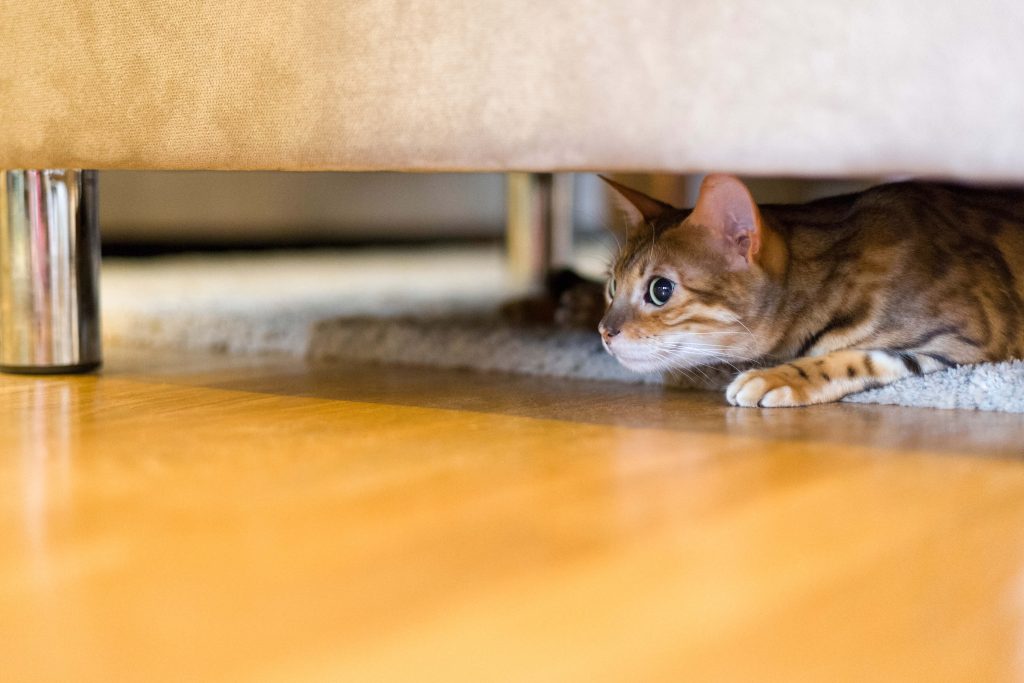
Cat goes missing after moving house

Has your cat gone missing right after you moved house? When cats are frightened and confronted with unfamiliar things, they might get scared and run away. Even indoor cats that are otherwise bold and daring will sometimes feel threatened by things right after they move to a new house. There might be something in their new environment that really scares them, something they just haven’t gotten used to yet. It’s also possible that they’ve gotten lost in their new territory. If your cat has gone missing, you should start your search in the immediate vicinity of your new home.
Cat is sad after moving house

Have you just moved house and your cat is displaying the kind of behaviour that would suggest it’s sad? Cats are no strangers to pain and sadness. If your cat misses their former home and all their cat buddies in the old territory, they may be grieving. Just like us humans, it hurts when you suddenly miss something you loved and had grown attached to. Don’t take it personally. Just give your cat time to say goodbye inside. And then give them plenty of space to study their new surroundings and get an idea of their new environment. Don’t push them, be calm and gently present. And if they want to, play with them and spoil them extensively. Show them that they’re welcome and not alone.
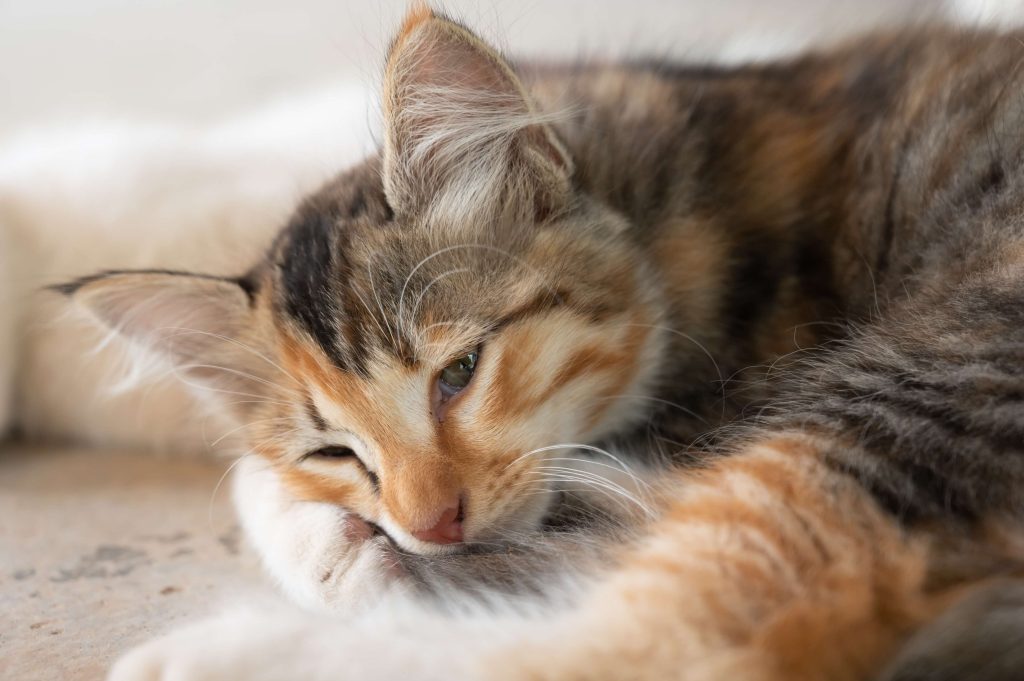
Cat won’t eat after moving house

Have you successfully moved house, but now you’re cat is refusing to eat? What could be causing their lack of appetite? You’re probably going to wrack your brain to figure it out. Is there something your cat is missing? Are they ill? If your cat doesn’t eat for a few days, it’s no big deal. It’s possible that their stomach is upset after all the excitement of the move and being transported in the carrier. It’s possible that it was all just a bit too much for your cat, and maybe their body has decided to go on strike. Perhaps your cat is still in “flight” mode, which means they’re going to avoid eating any food so as to save the energy that would be required to process that food. Just make sure your cat always has enough liquid at its disposal.
Cat hides after moving house

Don’t be surprised if your cat ends up hiding for a while after you move house. In fact, you should be providing your cat with opportunities to hide and feel safe in their new environment. When cats are insecure or afraid, they usually react by running away, so it makes the situation much better if they’re able to find a hiding place where they feel safe and protected. This spot should be theirs alone, a safe space in an unknown territory. It should always be waiting for them if they find themselves in an uncomfortable situation. Having this kind of hiding place will reassure your cat. And don’t forget to make sure their water, food and litter box are nearby.
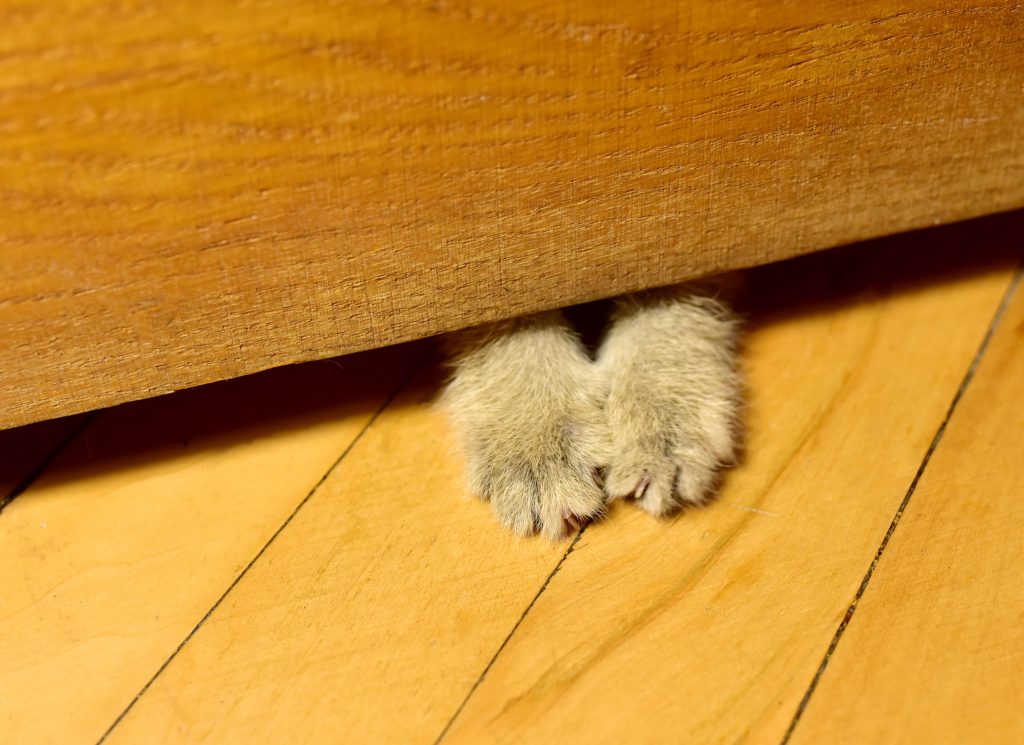
Frequently asked questions about moving house with a cat
Your furry friend can either stay with someone during the move, or you can set up “cat room” where they can live normally until the day of the move.
You should wait for about two weeks after you’ve moved house to let your cat out. For shy or inexperienced cats, it might make sense to wait even longer before letting them out.
Everything in your new home should be prepared for your cat before you actually move in. You should set up a room that’s reserved just for them and filled with all their favourite things. This safe space should be reserved exclusively for your cat until they’ve completely settled in.
You might notice a change in your cat’s behaviour after moving house. It’s totally natural for cats to react anxiously when they’re forced to change locations. For cats, fear is an essential survival instinct. A cat that doesn’t feel fear is likely to very quickly become the victim of an attack.
You can get your cat used to their new home by creating a safe space they can retreat to in their new living area. It should be a place where your cat can chill undisturbed and be surrounded by familiar things. You should also continue to carry out all the regular feeding and petting rituals.
It’s hard to make any general statements about how bad moving house is for cats. Some cats are relaxed and able to navigate changes to their everyday lives relatively calmly. Others react anxiously to any change of location.
The best way to calm your cat down after moving house is by giving them all the time they need to inspect their new surroundings and get a feel for the environment. Make sure you’re around to reassure them, and if your cat feels up to it, you can play and cuddle with them too.
